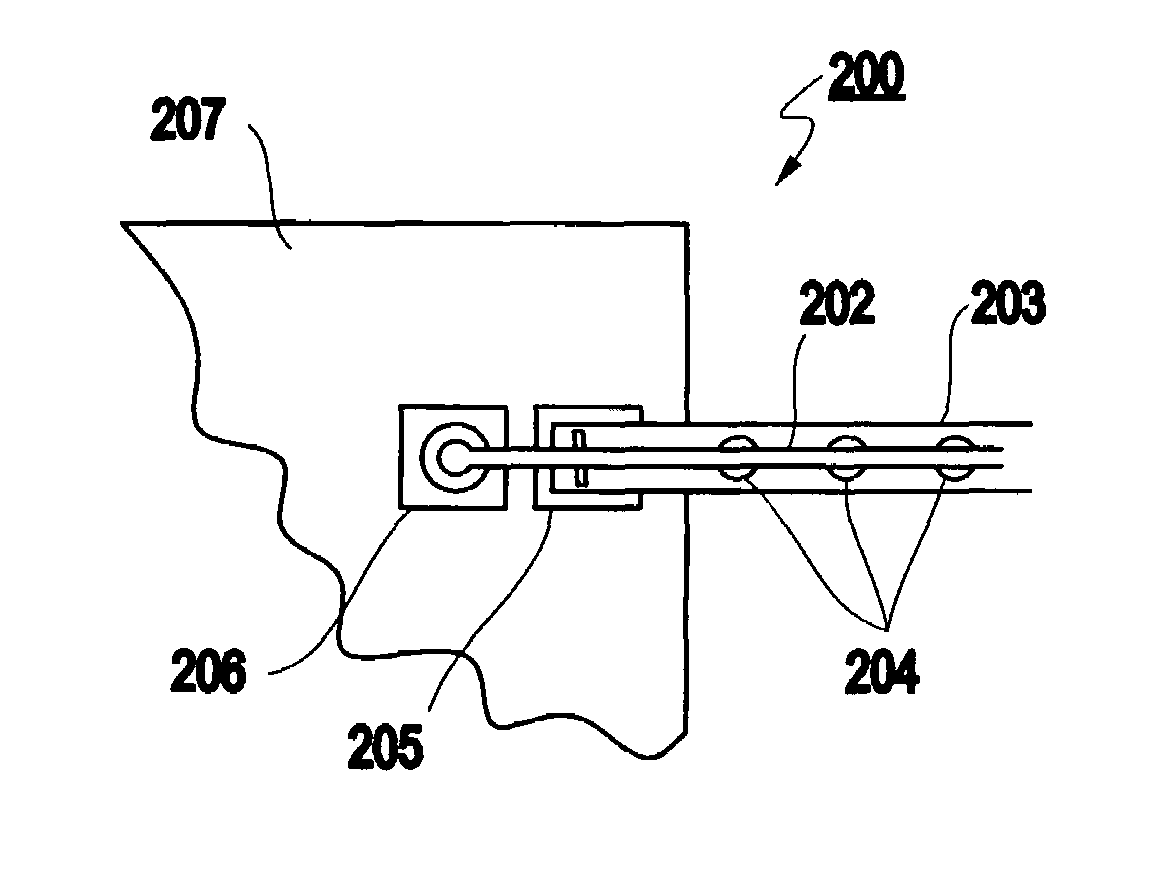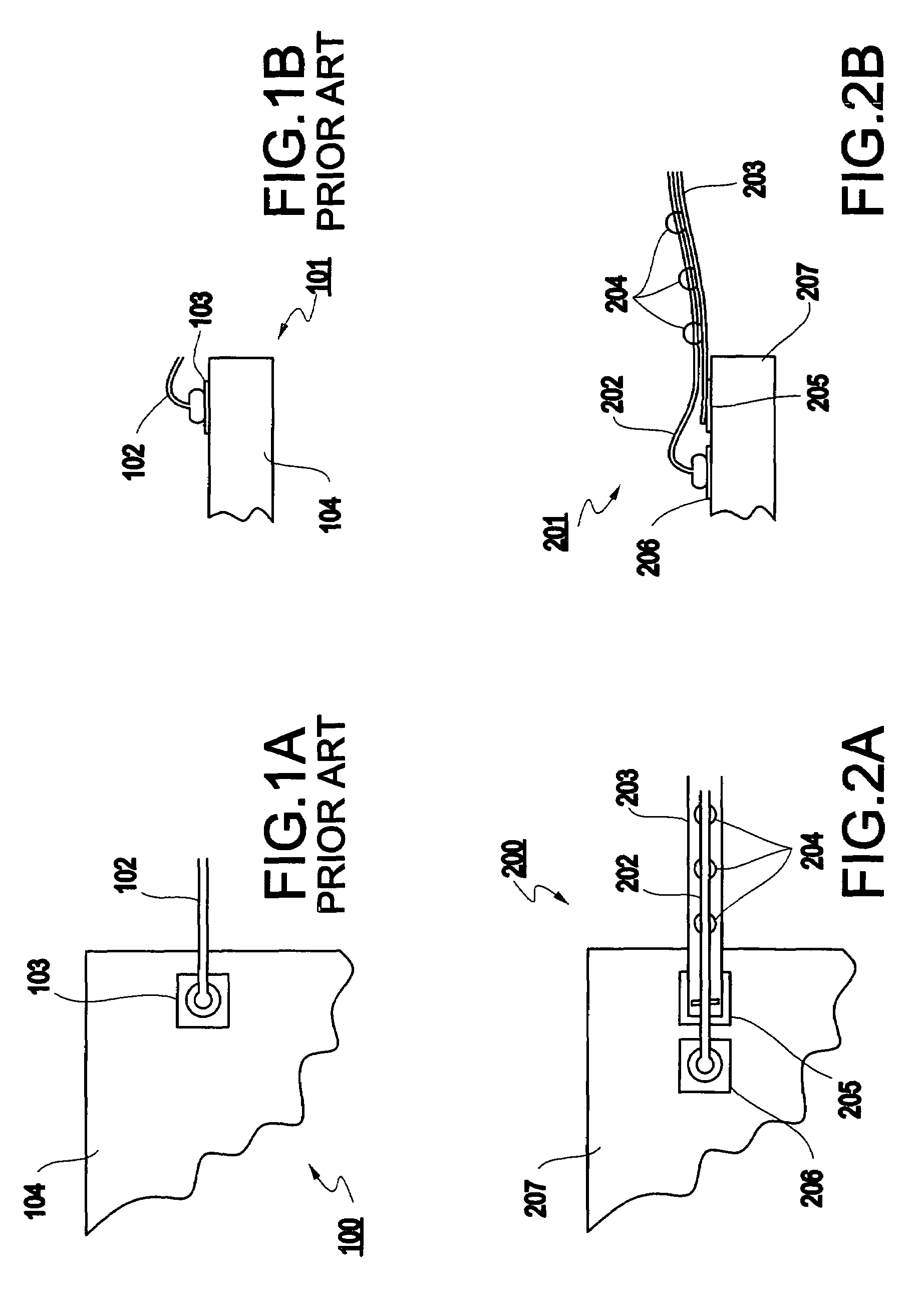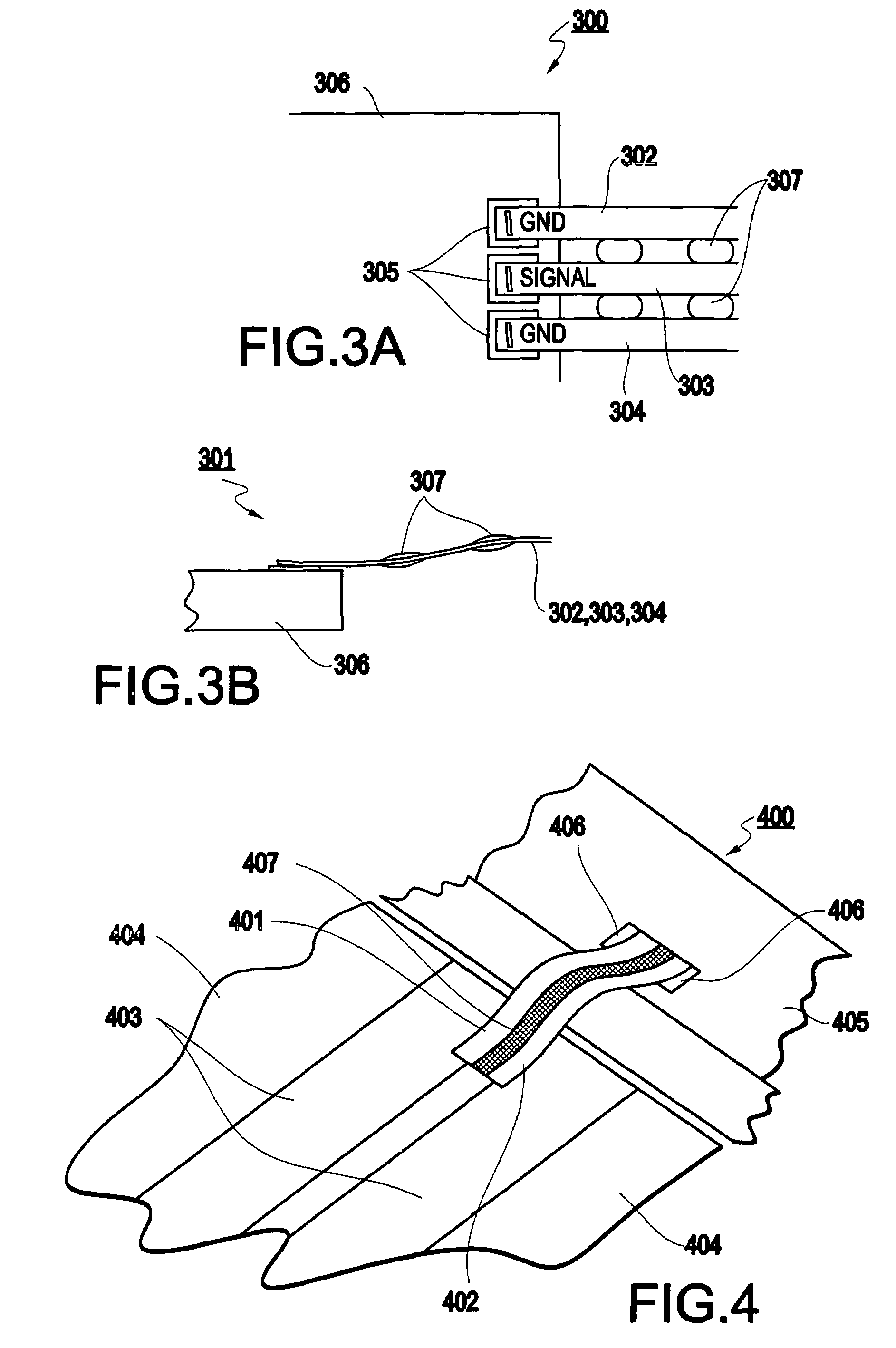Method and structure for controlled impedance wire bonds using co-dispensing of dielectric spacers
a dielectric spacer and controlled impedance technology, applied in the field of wire bonding, can solve the problems of inefficiency, inapplicability in all cases, and ineffective implementation of existing solutions, so as to reduce product costs, reduce cost, and increase data rate
- Summary
- Abstract
- Description
- Claims
- Application Information
AI Technical Summary
Benefits of technology
Problems solved by technology
Method used
Image
Examples
Embodiment Construction
[0023]Referring now to the drawings, and more particularly to FIGS. 2A-5, exemplary embodiments of the present invention will now be described.
[0024]It is noted that one of ordinary skill in the art, after having read the details described herein, would readily be able to apply the present invention as a method of producing a transition for a chip to interconnect the chip to terminals of a package, interconnecting chips within a package, interconnecting a chip to a board, or otherwise interconnecting the chip.
[0025]However, although the present invention is discussed in the environment of a chip transition, there is no intent that it be thus limited, since one of ordinary skill in the art would readily recognized that the concept can be generalized as applying more generically (e.g., to electronic interconnections).
[0026]That is, the present invention can equally be applied to, for example, to integrated circuits, semiconductor devices, passive devices, filters, and so on.
[0027]More...
PUM
| Property | Measurement | Unit |
|---|---|---|
| dielectric constant | aaaaa | aaaaa |
| dielectric constant | aaaaa | aaaaa |
| dielectric constant | aaaaa | aaaaa |
Abstract
Description
Claims
Application Information
 Login to View More
Login to View More - R&D
- Intellectual Property
- Life Sciences
- Materials
- Tech Scout
- Unparalleled Data Quality
- Higher Quality Content
- 60% Fewer Hallucinations
Browse by: Latest US Patents, China's latest patents, Technical Efficacy Thesaurus, Application Domain, Technology Topic, Popular Technical Reports.
© 2025 PatSnap. All rights reserved.Legal|Privacy policy|Modern Slavery Act Transparency Statement|Sitemap|About US| Contact US: help@patsnap.com



